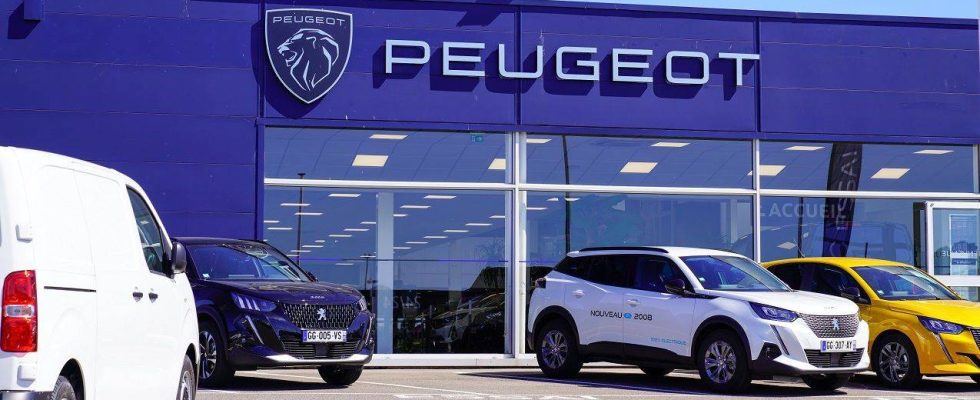(AOF) – Stellantis France announces that it has confirmed to its social partners its intention to recruit 1,200 employees for the year 2023 for the production, engineering and trade professions after having recruited 1,050 people in 2022 in France. The manufacturer adds that 13,000 of its employees were trained in the challenges of electrification in 2022.
Stellantis announces that it is investing in the industrial tool of its 12 French sites which will manufacture 12 electric vehicles, and in particular in human capital: the upcoming start-up of the ACC gigafactory on the Billy-Berclau/Douvrin site in the Pas-de- -Calais was an opportunity to set up a retraining for the employees of the site towards the emerging professions of electric mobility.
AOF – LEARN MORE
Key points
– Sixth largest automotive group in the world – 3rd in the United States with 11% market share and 2nd in Europe with 20%, born in January 2021 from the Peugeot-Fiat Chrysler Group merger;
– Turnover of €162 billion achieved under 14 brands – Alfa Romeo, Chrysler Citroën, DS, Jeep, Opel, Peugeot, etc. -, mainly in North and South America and in Europe;
– Business model adapting the group to the new uses of motorists and the electrification of vehicles via digital transformation, the internal culture of performance (high industrial competitiveness) and social responsibility;
– Capital with 4 main shareholders: the holding company of the Agnelli Exor family for 14.4%, the Peugeot family for 7.2%, the Chinese Dongfeng for 5.6% and BPI France for 5.66%, John Elkann chairing the board of directors of 11 members and Carlos Tavares being managing director;
– Sound financial position: €59.7 billion in available industrial liquidity and €56 billion in equity, against a debt of €34 billion.
Challenges
– “Dare forward 2030” strategic plan:
– maintenance of a balance point at less than 50% of invoicing and operating margins at more than 2 digits,
– doubling of revenues including a quadrupling in the high end, ¼ achieved outside Europe and North America (€20 billion in China) and 1/3 from online sales,
– from 2024, $5 billion in cash from synergies;
– Innovation strategy:
– increase in battery capacity to 400 GWh,
– combination of fuel cells/hydrogen for large utilities,
– new venture capital fund of €300 million for advanced technologies,
– collaborative ecosystem, with more than 160 co-financed projects and more than 1,000 partners involved in autonomous driving, connectivity, manufacturing, electrification technologies and cutting-edge propulsion,
– academies in digital & data and electricity;
– Environmental strategy of carbon neutrality in 2038 via a 50% reduction in 2030:
– 100% electric vehicles in Europe and 50% in the United States;
– new circular economy division – purchase of reconditioner Stimcar, launch of regional circular hubs from 2023, SUSTAINera label – aiming for €2 billion in revenue by 2030,
– electrification and software plans with €30 billion in investments by 2025;
– Integration of the Share now specialist -5 million customers worldwide;
– Securing the battery ecosystem by 5 giga-companies in Europe and North America, by partnerships and by strengthening the supply of lithium hydroxide and CoolSIC chips from Infineon.
Challenges
– Shortages of semiconductors until the end of 2023;
– Execution of synergies –€3.2 billion in net cash in 2021 out of €5 billion expected in 2024;
– Advances in financing activities in the United States and Europe, with high profitability;
– Increase in the operating margin of European activities;
– After a 29% increase in revenues in the 3rd quarter, confirmation of the 2022 objective of a double-digit operating margin and positive free cash flow.
A paradoxical performance
Data from EY highlights that the performance of the world’s top 16 manufacturers was particularly strong in 2021. While the average margin has fallen for three years in a row, from 6.3% in 2017 to just 3.5% in 2020 , this margin stood at 8.5% in 2021. This level is a record for ten years. However, the context was particularly hectic for manufacturers, faced with unprecedented shortages of components. Global sales fell 14% in 2020, the year of the health crisis, to rebound by only 5% in 2021. However, last year, players were able to reap the benefits of their efforts on their fixed cost structure. .
